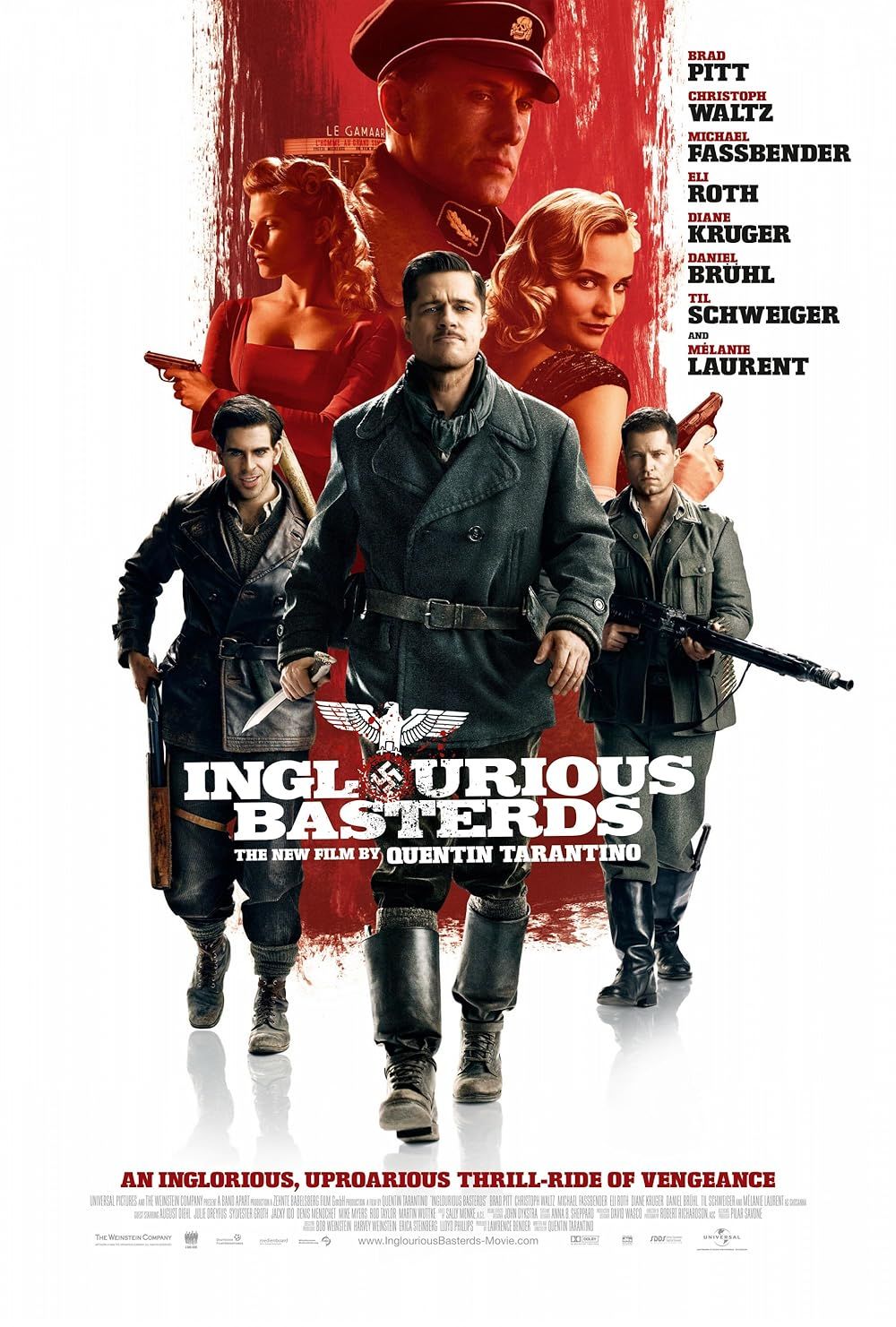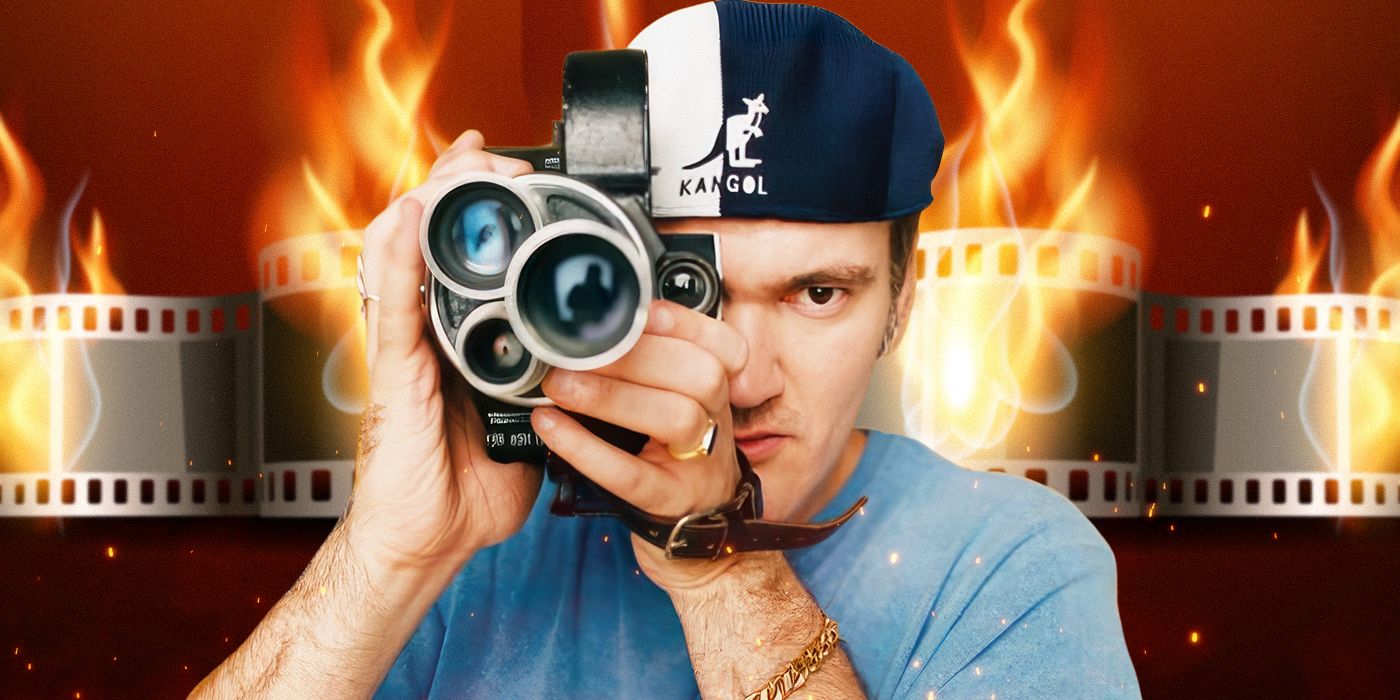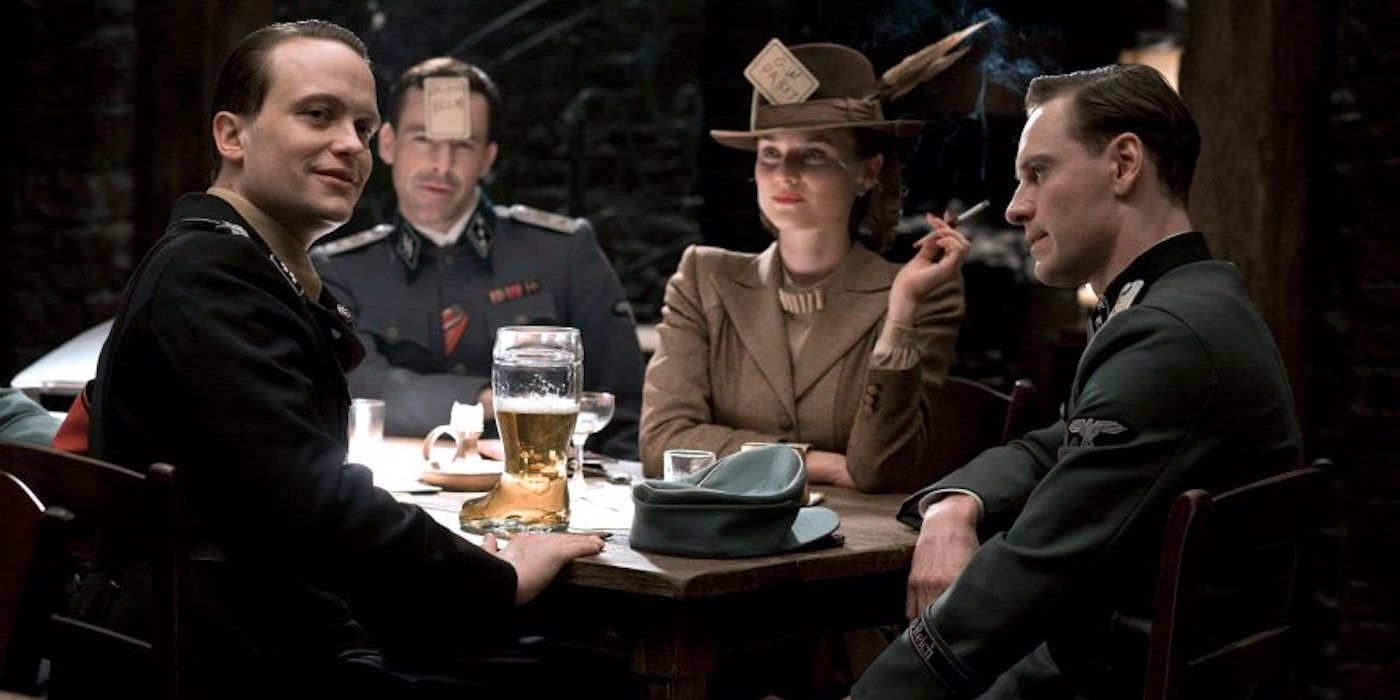The Big Picture
- Tarantino's Inglourious Basterds perfectly blends violent haphazardness with sensitive poetic moments, exemplifying his directorial prowess.
- The tavern sequence showcases Tarantino's encyclopedic film knowledge and mastery of suspense, setting up a signature bloody confrontation.
- Through sharp dialogue and a bloody ending, the scene exemplifies Tarantino's perfected art of violence, surpassing his previous iconic moments.
With a distinct and unmistakable vision, Quentin Tarantino has cemented himself in popular culture, to the point where his style has merited its own word in the Oxford English Dictionary: Tarantinoesque. While he has displayed his recognizable aesthetic, together with a lot of memorable scenes in nine feature films, it is arguably in Inglourious Basterds where his oeuvre is at its most exemplary. In a rather violent but touching tribute to not only war films but to the lives lost under the Third Reich, Tarantino perfectly blends in Inglourious Basterds the feeling of haphazardness and sensitivity in true poetic fashion. This mixture of elements comes to fruition in arguably the most definitive sequence of his directorial prowess, the tension-filled sequence in La Louisiane.

Inglourious Basterds
- Release Date
- August 19, 2009
- Director
- Quentin Tarantino
- Cast
- Brad Pitt , Mélanie Laurent , Christoph Waltz , Eli Roth , Michael Fassbender , Diane Kruger
- Runtime
- 152 minutes
- Main Genre
- Adventure
- Writers
- Quentin Tarantino
- Studio
- Universal Pictures
What Is 'Inglourious Basterds' About?
Inglourious Basterds tells two intersecting stories of a group of Jewish soldiers named "The Basterds," and the vengeance of the last remaining member of a Jewish family massacred by the Nazi party, Shoshanna Dreyfus (Mélanie Laurent). Led by Lt. Aldo Raine (Brad Pitt), The Basterds ravage through Nazi-occupied France and kill any group of German soldiers they encounter. Dreyfus, who now runs a cinema and has a new identity, meets a German war hero in Frederick Zoller (Daniel Brühl) who is smitten with her. In a move to impress Dreyfus, Zoller persuades Dr. Joseph Goebbles to show the film highlighting his exploits in Shoshanna's theater. The Basterds get wind of this plan, and together with Lt. Archie Hicox (Michael Fassbender), look to meet German movie star turned-English spy Bridget von Hammersmark (Diane Kruger) to discuss an operation to blow up the theater. To remove any form of suspicion, they decide to meet at La Louisiane, a tavern located in the village of Nadine. It is in this meeting that Tarantino shows the full repertoire of a filmmaker so in tune with himself, and uses his ability to present a moment that will forever be enshrined in the annals of cinema.
The Cineliterate References in the Tavern Scene Elevates 'Inglourious Basterds'
Tarantinoesque, defined as "characterized by graphic and stylized violence, non-linear storylines, cine-literate references, satirical themes, and sharp dialogue," is a succinct way to describe the frenetic filmmaking of one of the most influential filmmakers of our time. The aforementioned characteristics have been used in a myriad of ways in his previous films, but it is in the tavern sequence where Tarantino takes his precious time to flesh out all the intricacies of these elements.
From a character standpoint, Tarantino's encyclopedic knowledge of film is at full display, and he uses the art of cinema as a tool against these monstrous villains. Archie Hicox is of particular interest here. The English Lieutenant's original occupation before the war is that of a film critic, who has voluminous knowledge in the realm of moving pictures. The mission exactly calls for an expert in film, and it may be gleaned that this is a Tarantino fantasy. Can you imagine a film geek in the middle of a daring mission to end mankind's bloodiest conflict? In the real world, perhaps it is unlikely, but in Tarantino's world, it is all that is necessary. The fact that Bridget von Hammersmark is a movie star who doubles as an agent for the allies only solidifies the notion that film, both figuratively and literally, is the savior and hero of this version of World War II. This time, Tarantino's knowledge of film and its history is not only used as a reference but also serves as the driving force in the success of those who rally against Hitler.
The Fine Art of Understanding and Meeting the Viewers' Expectations
As the Basterds make their way inside the basement-like bar, they are surprised to see von Hammersmark engaging in a guessing game with German soldiers. It transforms the whole dynamic of their plan since they initially thought that they would be alone. von Hammersmark soon joins them, but as soon as they get to the discussion, an inebriated soldier intrudes on them. When Hicox reprimands the soldier for being intrusive, the latter displays a bit of booze-indulged confidence and questions the strange accent of the undercover English captain. Major Hellstrom (August Diehl) then reveals himself and joins the group, and also questions Hicox's accent, and afterward joins them and urges them to play the guessing game.
From this point on, Tarantino pulls a Hitchcockian move, figuratively planting a suspense-filled bomb and letting the audience in on it. The viewers know that they have a secret, and they understand that once this is revealed, it may blow up in everyone's faces. As mere spectators, we are left to revel in both the known facets and the unknown resolution to this binding pickle the characters are in. Here, Tarantino sets up what is expected to be a signature bloody confrontation, but he takes his sweet time in stretching it all out. It seems that he knows that the audience is waiting for that inevitable violent outburst, but he just keeps going and going. It is a figurative rubber band extended up to its maximum capacity, and once it breaks, so does all hell that comes with it. Tarantino uses our expectations and our knowledge of his oeuvre to play the viewers like a fiddle.
Sharp Words and a Bloody Ending – A True Tarantinoesque Finale
As the game concludes with Hellstrom successfully guessing the character assigned to him, Hicox informs him that he is intruding which results in one of the most riveting exchanges of words between two Tarantino characters. Both Diehl and Fassbender savor each and every syllable of their dialogue, and the audience is left to grip their seats in anticipation. Tarantino's dialogue is specifically descriptive of the characters' feelings and predicaments, with Hicox coming off as the classiest man in the world, and Hellstrom as the most annoying unwanted visitor in history. Both playful and intimidating, the ensuing conversation between the two is a see-saw affair that ultimately leaves the SS officer relenting and offering a drink in peace before he leaves.
What is interesting here is that while Tarantino's dialogue is certainly the focus, an instance of non-verbal communication becomes the star of the scene. When Hellstrom asks the bartender to give them shots of an aged whiskey together with three new glasses, Hicox makes a fatal mistake by raising three fingers without using his thumb. The scene becomes dead silent, and Hellstrom gazes at the Englishman who has blown his cover with all the fury in Germany. When he downs his drink, a Mexican standoff ensues, as is the trademark of a Tarantino conclusion. It is in this instance that it finally reaches a fever pitch, and the scene explodes into a crimson-filled canvas. Blood is everywhere, the killing is gruesome and graphic, and it ends with almost everyone meeting their maker. There is an artful sensation in this show of violence, with each kill reverberating in the audience's heads despite its quickened pace and shortcuts. It is evident that Tarantino has mastered the art of bloody resolutions. It is neither too grotesque nor too subtle, but rather the perfect amalgamation of what makes his brutality a signature tool. It is as if he learned from the already exemplary barbarity of his previous films and presents an ameliorated version of Tarantinoesque violence.

One of Quentin Tarantino’s Best Scenes Doesn’t Have an Ounce of Blood or a Single Swear
This montage stands as the most defining sequence of Tarantino’s career.While there have been similar scenes of Tarantino showing his talents, such as the Ezekiel 25:17 scene with Jules and Brett in Pulp Fiction, the bloody aftermath of Reservoir Dogs, and the showdown at the House of Blue Leaves in Kill Bill, the tavern sequence leaves them in the dust. It is a show of not only maturity, but a utilization of the audience's expectations as cultural capital to subvert and entertain. Much like a perfectly tuned musical instrument, every note and frame of this scene is exquisite, purposely done for spectators who are hanging on every word in his screenplay. It is the peak of Tarantino's ability, and if his previous works still left others doubting his place among the masters of cinema, this sequence certainly cements it like an etched swastika on the forehead of a Nazi turncoat.
Inglourious Basterds is currently available to rent or buy on Apple TV+ in the U.S.

